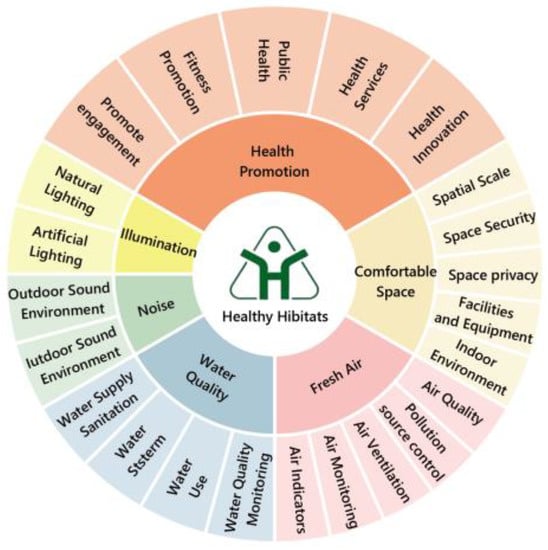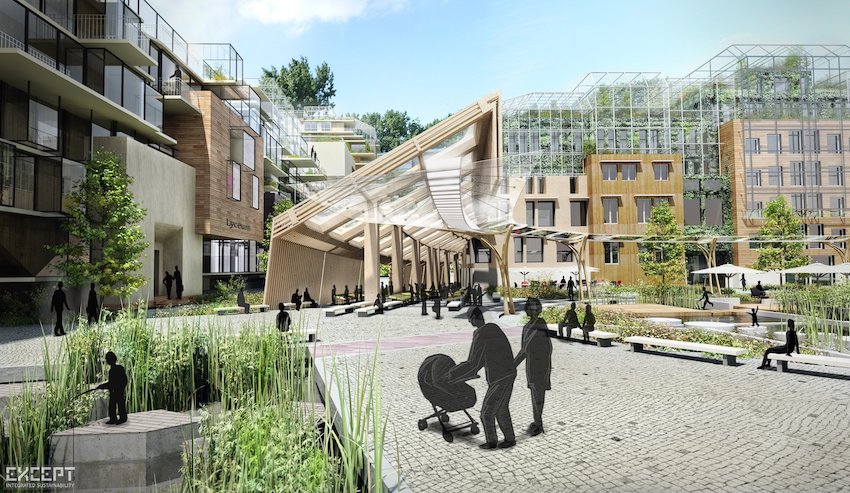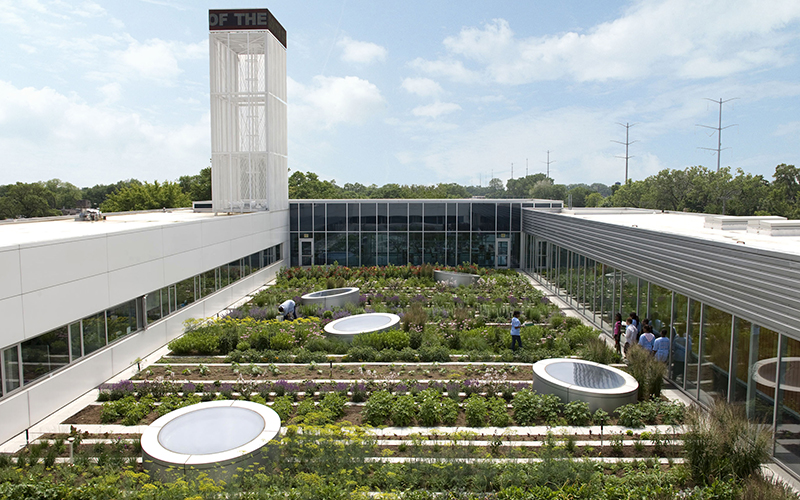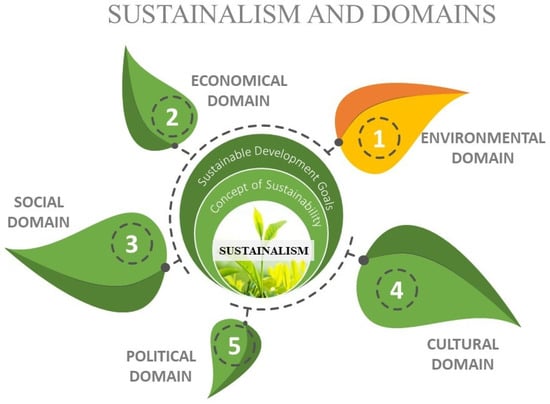Overview of Global Urban Policies Supporting Biophilic Design.
As urban areas worldwide continue to expand and develop, the integration of **biophilic design**—an approach aimed at fostering a connection between urban environments and nature through sustainable architecture and ecological design—has garnered considerable attention.
This article examines key global urban policies that advocate for **biophilic principles**, including the **New Urban Agenda**, the **Paris Agreement**, and the **Sustainable Development Goals**—key international agreements shaping urban governance and policy frameworks.
It emphasizes innovative case studies from cities such as **Singapore** and **Portland**, highlighting sustainable architecture and adaptive reuse, while also addressing the challenges associated with the implementation of these strategies.
By prioritizing **green infrastructure** and **community engagement**, urban living can be enhanced through urban renewal and landscape architecture for the betterment of all residents.
Overview of Global Urban Policies Supporting Biophilic Design
.jpg_00.jpeg)
The integration of biophilic design into global urban policies signifies a transformative shift in urban planning that emphasizes environmental sustainability and urban resilience while addressing the multifaceted challenges of 21st-century urban environments.
As cities confront the effects of climate change, pollution, and rapid urbanization, comprehensive approaches that incorporate elements of nature, biodiversity, and urban ecology are becoming increasingly prevalent.
This overview aims to examine how various policies and frameworks worldwide are establishing the foundation for innovative design principles that enhance urban resilience, promote health and well-being, and encourage community engagement through the development of vibrant public spaces and urban greenery.
1. The New Urban Agenda
The New Urban Agenda, adopted during the Habitat III conference in 2016, establishes a framework for sustainable urban development and underscores the significance of inclusive city governance, social equity, and green building practices.
This comprehensive framework aims to redefine urban landscapes by promoting community-driven design, ensuring active citizen participation in the shaping of their environments.
By incorporating biophilic design principles, the agenda seeks to strengthen the human-nature connection, thereby enhancing urban resilience to climate change and promoting overall well-being and community well-being.
Additionally, it advocates for environmental justice, ensuring that marginalized communities have access to green spaces and essential services.
Through these objectives, the New Urban Agenda not only reconfigures the structure of cities but also fosters the development of equitable and healthy environments for all residents, supporting environmental stewardship and urban sociology.
2. The Paris Agreement
The Paris Agreement represents a significant advancement in global initiatives aimed at addressing climate change, necessitating that cities implement policies that prioritize environmental sustainability, climate adaptation, and resilience to urban heat islands.
As urban planners increasingly acknowledge the importance of effective policy frameworks, there is a growing emphasis on incorporating climate adaptation strategies that both mitigate risks and enhance the quality of urban living.
By integrating nature-based solutions such as green roofs, urban forests, and permeable surfaces, cities can cultivate ecosystems that effectively absorb heat, enhance biodiversity, and improve air quality.
Furthermore, embracing biophilic design principles allows urban environments to reintegrate residents with nature, fostering healthier communities and improving quality of life.
These initiatives not only align with the fundamental objectives of the Paris Agreement but also enable cities to address the complex challenges posed by climate change in a sustainable manner.
3. The Sustainable Development Goals
The Sustainable Development Goals (SDGs), established in 2015, provide a comprehensive framework that guides nations in pursuing sustainable urban development while addressing pressing issues such as poverty, inequality, biodiversity conservation, and urban density.
By incorporating biophilic design principles into urban planning, cities can enhance their aesthetic value and create environments that promote physical and mental well-being. This approach acknowledges the essential role of ecosystem services within urban contexts, ensuring that connectivity with nature can thrive in these environments.
As communities adopt these principles, they progress toward a green economy, wherein sustainable practices foster economic resilience and ecological health. The relationship between urban sustainability and public health becomes increasingly apparent when cities prioritize green spaces, which facilitate social interaction and enhance air quality, ultimately contributing to healthier populations and more vibrant urban ecosystems.
4. The Biophilic Cities Network
The Biophilic Cities Network is a global initiative that advocates for the integration of nature into urban life, emphasizing the enhancement of urban biodiversity, community engagement, and ecological footprint reduction through innovative design.
By fostering connections between individuals and their natural environments, the network seeks to establish vibrant urban greenery, nature corridors, and accessible public spaces that reflect the cultural heritage of each city.
For instance, Singapore serves as a prominent model with its Gardens by the Bay and extensive green rooftops that seamlessly blend architecture with nature. Similarly, cities such as Melbourne have adopted biophilic principles by including expansive parks and biophilic designs in their urban planning.
The collective successes of these initiatives not only enhance the mental well-being of residents but also strengthen efforts to mitigate urban heat, improve city resilience, and promote sustainability.
5. Integration of Nature into Urban Planning and Design
The integration of nature into urban planning and design is essential for the creation of sustainable and livable cities, as it enhances urban aesthetics, landscape connectivity, and contributes significantly to public health and well-being.
By adopting strategies that incorporate green infrastructure, such as green roofs and urban forests, cities can effectively manage stormwater, improve air quality, and provide habitats for wildlife. The implementation of nature-based solutions, including urban agriculture, can promote local food production and strengthen community ties.
Thoughtful spatial planning enables the optimal placement of parks and natural areas, encouraging residents to engage more actively with their surroundings.
These practices not only mitigate the heat island effect but also foster biodiversity, ultimately leading to resilient urban ecosystems that benefit all citizens.
6. Encouraging Green Infrastructure and Biodiversity
.jpg_01.jpeg)
Promoting the development of green infrastructure is essential for enhancing biodiversity in urban areas and provides various ecosystem services, including pollution reduction and improved air quality.
Such infrastructure not only creates greenways and blue spaces that support wildlife habitats and human recreation but also plays a crucial role in urban resilience. By incorporating elements such as rain gardens, green roofs, and restored wetlands, cities can effectively manage stormwater runoff, thereby reducing the risk of flooding and fostering healthier urban ecosystems.
These spaces serve as critical corridors for urban wildlife, facilitating ecological restoration and enabling various species to thrive within urban environments. Ultimately, investing in green infrastructure leads to a more sustainable urban environment that benefits both human populations and natural ecosystems.
7. Fostering Community Engagement and Education
Fostering community engagement and education is crucial for the successful implementation of biophilic design, as active participation enables residents to play a significant role in urban transformation, sustainable development, and public policy formulation.
By utilizing techniques such as citizen science and health impact assessments, local authorities can gain a deeper understanding of the needs and preferences of their communities. These strategies not only provide residents with a platform to express their opinions but also facilitate their direct involvement in data collection and analysis.
Addressing critical issues such as affordable housing through participatory design ensures that developments accurately reflect the genuine needs of the population. Workshops and educational initiatives can further enhance public understanding, encouraging citizens to actively participate in discussions regarding their living environments.
This collaborative approach ensures that their interests are integrated into urban planning outcomes, promoting social sustainability and improved urban form.
8. Prioritizing Health and Well-Being in Urban Environments
Prioritizing health and well-being in urban environments is a fundamental principle of biophilic design, which underscores the necessity of incorporating green spaces, nature accessibility, and exposure to nature to enhance both physical and mental health among urban residents.
By integrating features such as green corridors and parks into the urban landscape, cities can substantially improve public health outcomes, foster a sense of community, and promote outdoor activities and participatory planning.
These green spaces function not only as recreational areas but also as essential components of urban sustainability metrics, contributing to environmental resilience and urban heat management.
Access to natural environments is critical for enhancing the quality of life and promoting community well-being, as numerous studies have consistently shown a correlation between proximity to greenery and reduced stress levels.
Establishing a network of accessible green areas encourages social interaction, enhances biodiversity conservation, and can lead to a more equitable distribution of health benefits, ultimately transforming urban living into a more comprehensive and fulfilling experience.
9. Singapore’s Gardens by the Bay
Singapore’s Gardens by the Bay serves as a prime example of biophilic design, demonstrating the innovative integration of sustainable architecture within urban landscapes. This remarkable destination not only fosters urban biodiversity by featuring a diverse array of plant species from various parts of the globe, but it also exemplifies a model for mixed-use development that effectively balances recreational spaces with ecological sustainability and public health.
The Gardens attract visitors with its impressive Supertree Grove and cooled conservatories, offering immersive experiences that connect urban living with nature. The carefully designed landscape architecture promotes community engagement through various events and educational programs, thereby enhancing public appreciation for environmental conservation and ecological design.
By transforming conventional public spaces into vibrant ecosystems, this urban oasis nurtures a sense of belonging and stewardship among both residents and tourists, promoting urban resilience and social equity.
10. Portland’s Green Streets Program
Portland’s Green Streets Program is a prime example of urban governance that prioritizes environmental sustainability and urban renewal.
Portland’s Green Streets Program exemplifies a model for sustainable urban development, demonstrating how innovative approaches can effectively manage stormwater while simultaneously creating vibrant, green public spaces.
This initiative represents a critical component of the city’s urban regeneration efforts, illustrating how environmental stewardship can be seamlessly integrated into everyday life. By prioritizing green infrastructure, the program not only enhances the visual appeal of urban areas but also contributes to increased urban biodiversity by providing habitats for a variety of species and supporting urban ecology.
The integration of passive design in these green spaces promotes a healthier ecosystem and encourages community engagement, furthering the principles of human-nature connection and sustainability.
Furthermore, the Green Streets Program aligns with the principles of a green economy by supporting local employment opportunities related to the maintenance and cultivation of parks and greenways.
Ultimately, the program reflects a strong commitment to resilience in the face of climate change, highlighting the significance of sustainable practices within urban environments.
11. Melbourne’s Urban Forest Strategy
Melbourne’s Urban Forest Strategy is designed to enhance urban biodiversity and livability by increasing the city’s tree canopy while encouraging community engagement in greening initiatives, which contribute to urban resilience and climate adaptation.
This comprehensive approach not only emphasizes the importance of planting additional trees but also seeks to actively involve residents in the process, thereby fostering a strong sense of community ownership. By promoting citizen participation in urban forestry, the strategy aims to elevate awareness regarding the significance of trees in improving air quality, providing shade, and contributing to the overall well-being of the population.
Through community-driven design initiatives, residents of Melbourne have the opportunity to collaborate in creating vibrant green spaces that support environmental sustainability and urban habitat. These collective efforts play a crucial role in enhancing the city’s resilience to climate change, ensuring that urban trees fulfill their essential role in promoting ecological awareness and healthier living conditions.
12. Oslo’s Car-free City Center
.jpg_10.jpeg)
Oslo’s initiative to establish a car-free city center represents a pioneering approach to urban design policies that prioritize active transportation, accessibility, and the reduction of pollution. This aligns with broader urban planning strategies and climate resilience efforts.
By restricting vehicle access, the city seeks to enhance the overall experience of its urban environment, making it more inviting for pedestrians and cyclists. This transformation not only promotes walkable cities but also cultivates a renewed sense of community, as public spaces become more vibrant and conducive to social interactions.
As cities across the globe confront the challenges posed by climate change, Oslo’s model stands as a significant example of resilience planning, illustrating that a transition toward sustainable urban living can greatly improve air quality and overall well-being.
The positive outcomes observed in Oslo may encourage other urban areas to implement similar strategies, thereby paving the way for a greener and more livable future, contributing to global urban policies and sustainable cities.
13. Limited Space and Resources
Addressing the issues of limited space and resources is crucial for achieving social sustainability and urban transformation.
Limited space and resources pose significant challenges for urban planners seeking to implement biophilic design principles in densely populated areas, thereby necessitating innovative and functional design approaches, such as space optimization and adaptive reuse.
To address these constraints, progressive cities are increasingly presenting case studies of successful mixed-use developments that prioritize community needs while simultaneously enhancing green spaces.
For example, a noteworthy urban project has successfully transformed an underutilized industrial area into a vibrant neighborhood hub, incorporating shops, residences, and parks in close proximity to one another. This community-driven design not only promotes social interaction but also bolsters local economies, illustrating how resilience planning and sustainable development can facilitate the creation of sustainable environments.
Through such exemplars, urban planners demonstrate that with creativity and collaboration, even the most constrained spaces can foster flourishing ecosystems that encapsulate the essence of urban living.
14. Resistance to Change
Resistance to change frequently impedes the implementation of new urban policies that incorporate biophilic design, often arising from considerations related to cultural heritage and community hesitance to modify established environments.
This reluctance may be rooted in a profound attachment to historical landscapes and concerns regarding the potential effects of new developments on social cohesion and environmental justice.
Stakeholders often perceive a disconnect from the urban planning process, which can foster skepticism about the motivations behind proposed changes. To address these issues, it is crucial to promote community engagement through transparent dialogue and participatory planning workshops.
By involving residents in the decision-making process and prioritizing their perspectives, urban planners can establish a collective vision that respects historical context while also embracing sustainable practices. This approach ultimately leads to vibrant urban environments that benefit all members of the community.
15. Lack of Awareness and Education
Addressing the lack of awareness and education is essential for fostering community well-being and promoting nature-based solutions.
A lack of awareness and education regarding biophilic design principles and their associated benefits can hinder successful implementation, underscoring the necessity for targeted outreach and community engagement.
In response to this gap, various initiatives have been established to inform both the public and decision-makers about the importance of biophilic design and urban planning in transforming urban environments. Workshops, seminars, and informational campaigns are being organized to highlight the relationship between biophilic elements in public spaces and their positive impacts on health and well-being.
By presenting concrete examples of how the integration of nature into urban planning can enhance environmental outcomes, these initiatives aim to foster a greater appreciation for the significance of greenery, natural light, and water features in revitalizing communities.
As awareness increases, so does the potential for developing healthier, more sustainable cities that prioritize holistic living for all residents.
16. Balancing Economic and Environmental Goals
Achieving a balance between economic and environmental goals is crucial for ensuring public policy aligns with sustainable architecture and urban regeneration.
Balancing economic and environmental objectives within urban policies is essential for the realization of sustainable cities, as conflicting goals may compromise efforts toward regenerative design and social equity.
The integration of a green economy into urban planning presents both considerable challenges and distinct opportunities. Planners must navigate the complexities of existing infrastructure and community needs while endeavoring to implement innovative strategies for urban regeneration and architectural innovation.
This often necessitates the establishment of robust policy frameworks that encourage sustainable practices without disregarding economic growth. Addressing the tension between developmental pressures and environmental stewardship requires collaborative approaches among stakeholders to identify common objectives, fostering social equity and community planning.
Ultimately, the adoption of sustainable methodologies can lead to dynamic urban ecosystems that not only bolster local economies but also improve the quality of life for residents, promoting a community ethos centered on sustainability.
Frequently Asked Questions
What is biophilic design?
.jpg_11.jpeg)
Biophilic design is an approach to creating spaces that incorporate elements of nature in order to improve the well-being and health of individuals in urban environments. It emphasizes the human-nature connection and the integration of nature-based solutions in urban form.
What are global urban policies?
Global urban policies are planning and development guidelines and regulations that are implemented by national or international bodies to promote sustainable and equitable growth in urban areas, often supported by international agreements and policy frameworks.
How do global urban policies support biophilic design?
Global urban policies support biophilic design by encouraging the incorporation of natural elements in urban planning and development, such as green spaces, natural lighting, and sustainable materials, thus fostering urban ecology and quality of life.
Are there specific policies that promote biophilic design?
Yes, there are several policies at the national and international level that specifically promote biophilic design, including the United Nations Sustainable Development Goals and the International Green Construction Code. These policies enhance urban resilience and ecosystem services.
What are the benefits of biophilic design?
Biophilic design, a key component of sustainable architecture, has been shown to have numerous benefits, including improving mental and physical health, increasing productivity and creativity, and reducing stress and anxiety in urban environments. It plays a crucial role in enhancing the human-nature connection and urban resilience.
How can cities incorporate biophilic design and urban ecology in their urban policies?
Cities can incorporate biophilic design in their policies by including specific guidelines and incentives for developers to implement biophilic elements in their projects, as well as promoting the use of green infrastructure, urban biodiversity, and sustainable materials in urban design. This approach can enhance community well-being, ecological design, and environmental sustainability, contributing to overall urban renewal and landscape architecture.

I’m Bruno, an architect with a deep passion for Biophilic Design in Urban Architecture. Throughout my career, I’ve focused on integrating natural elements into urban planning, and I created this site to share my insights and foster a deeper understanding of how biophilic principles can significantly enhance urban living. Dedicated to sustainable development, I continually explore innovative design solutions that promote both environmental and human well-being in city landscapes.














Publicar comentário